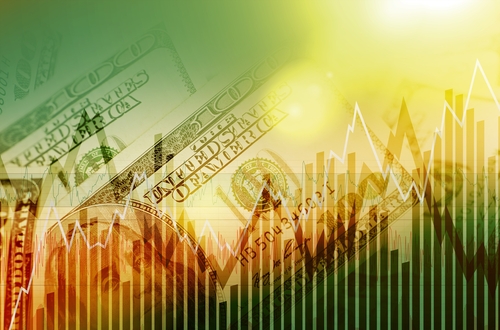The German Ifo Business Climate indicator fell to 90.1 in January from the revised 92.2 recorded in December 2020, coming in below the market forecast of 91.8 as German companies voiced less optimism about the current domestic conditions.
The reading appeared to impact Germany’s leading index, the DAX 30, which closed the European session out down -1.66%. France’s CAC 40 closed -1.57% down. Both indices are now negative in 2021 after the DAX printed a record high on January 9.
The euro traded down versus most of its main peers during Monday’s trading sessions. At 7 pm UK time on Monday 25, EUR/USD was down -0.22% at 1.214, trading close to the first level of support S1 after breaching S2 during the New York session. EUR/JPY traded down -0.25% while EUR/GBP was down -0.16%. The euro recorded gains on the day versus the Swiss franc as CHF’s safe-haven status dimmed, EUR/CHF traded up 0.10%.
The UK FTSE 100 also closed the day out down -0.67% but retaining its year-to-date gains of 2.99%. GBP/USD traded flat at 1.367 close to the daily pivot point. Analysts and traders are waiting to see how the unemployment, employment situation has deteriorated over recent months as a new lockdown was put in place to contend with the third COVID-19 wave. The latest unemployment data will get published by the UK’s ONS early Tuesday morning before the London session opens; the value of GBP could alter because of the readings.
US equity indices whipsaw in wide ranges
US equity markets experienced mixed fortunes during Monday’s New York session. It proved tricky to pinpoint why the indices oscillated in such wide ranges during the New York session. The supposed threat of the minimum wage rising to $15 per hour was one theory. The raging pandemic and a potential lockdown to get ahead of the pandemic situation was another reason offered up.
The NASDAQ 100 whipsawed in a broad range; initially rising to over 13,600 (another record high) while breaching R3, then surrendering all the gains to crash through S3. Towards the end of the day’s session price traded close to R1 up 0.41% on the day at 13,421.
The DJIA plunged through S3 before recovering to trade on the daily pivot point and down -0.39% on the day. The SPX 500 also whipsawed in a wide range, although not as violently as the NASDAQ tech index. The leading US index traded close to flat on the day at 3,842.
Crude oil continued its recent momentum rise during Monday’s sessions. WTI traded over $52 a barrel at $52.77 up 0.97% on the day. It’s up 10.71% monthly and 8.66% year-to-date, reflecting the optimism for global growth in 2021 if (when) the worldwide vaccination programmes work. Gold traded close to flat at $1853 per ounce. Silver was down -0.43% at $25.29 per ounce.
Economic calendar events to monitor on Tuesday, January 26
As mentioned above, the metrics revealing the UK’s latest employment/unemployment situation will show how deep the impending double-dip recession will be. The forecast is for the rate to come in at 5.1% and a loss of 166K jobs in November.
Both figures disguise the cataclysmic job losses in the UK during 2020. If the statistics miss forecasts by any distance, then sterling might fall versus its main peers.
The Case-Shiller house price index will get published during the afternoon. One of the pandemic curiosities is the record high house prices in the USA and the UK as employment levels have collapsed. In the USA the forecast is for a house price rise of 8.1% YoY up to November 2020. The consumer confidence reading for January will also be broadcast during the afternoon session, the prediction is for an increase to 89 from 88.6


